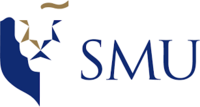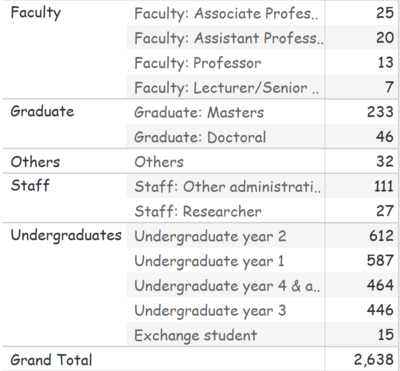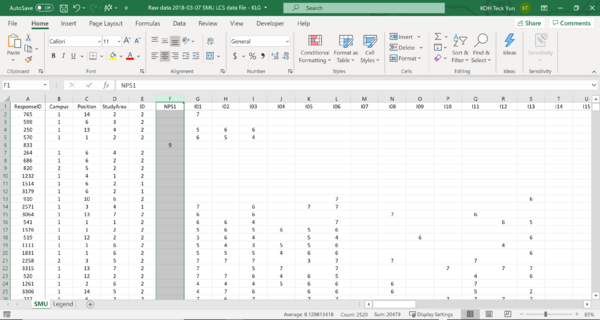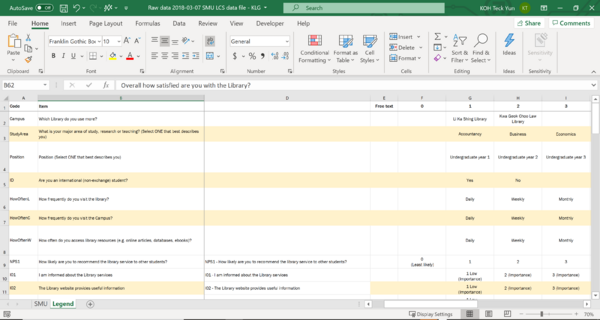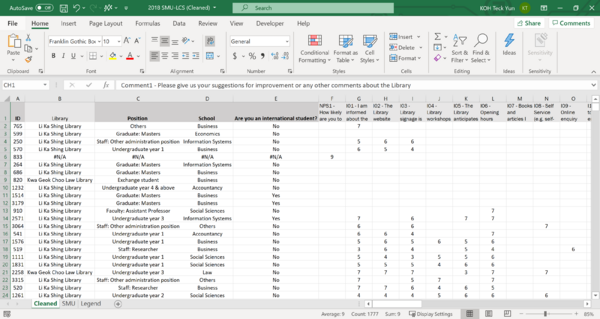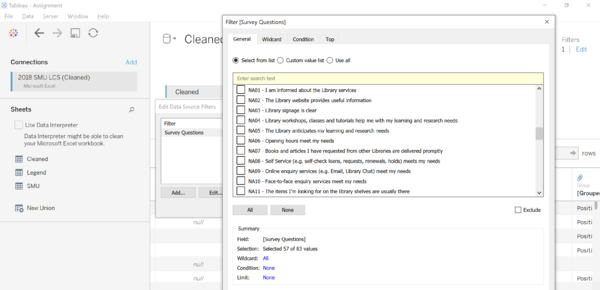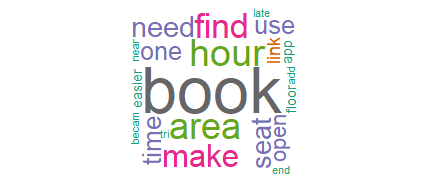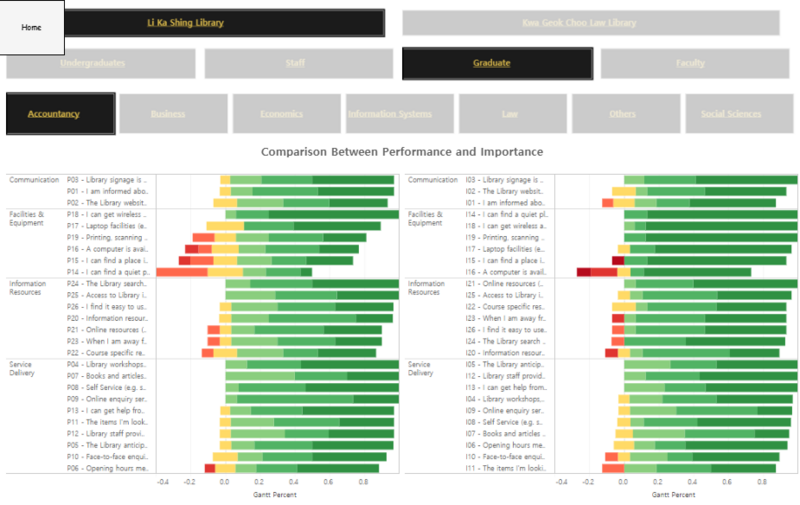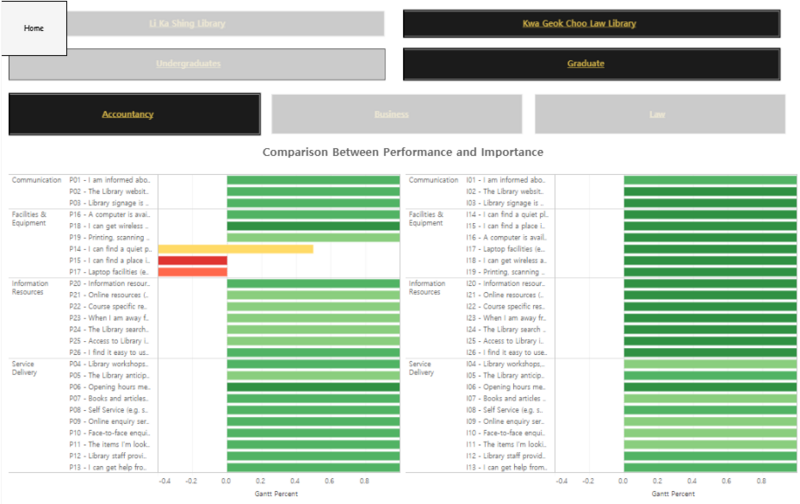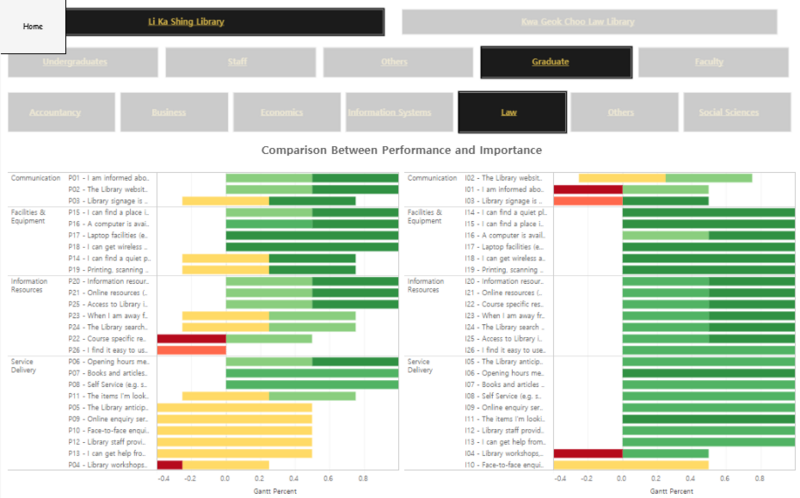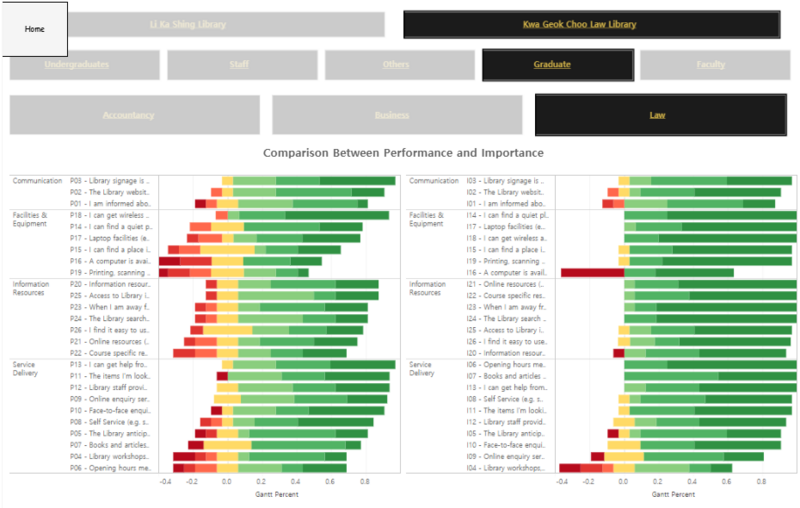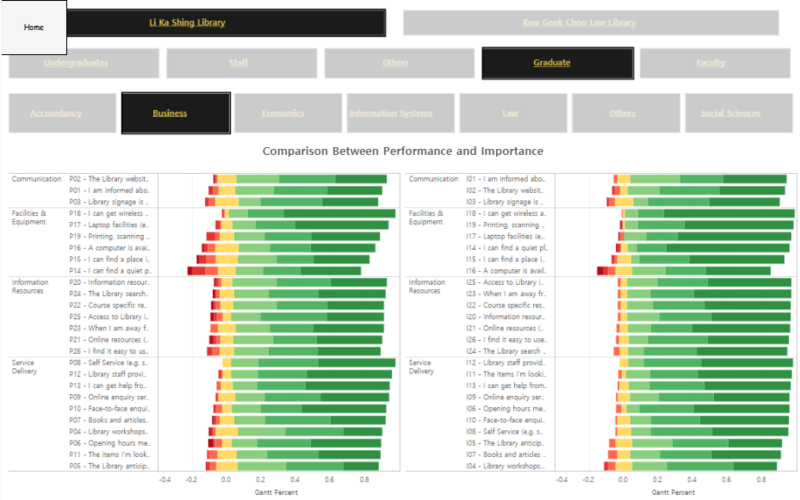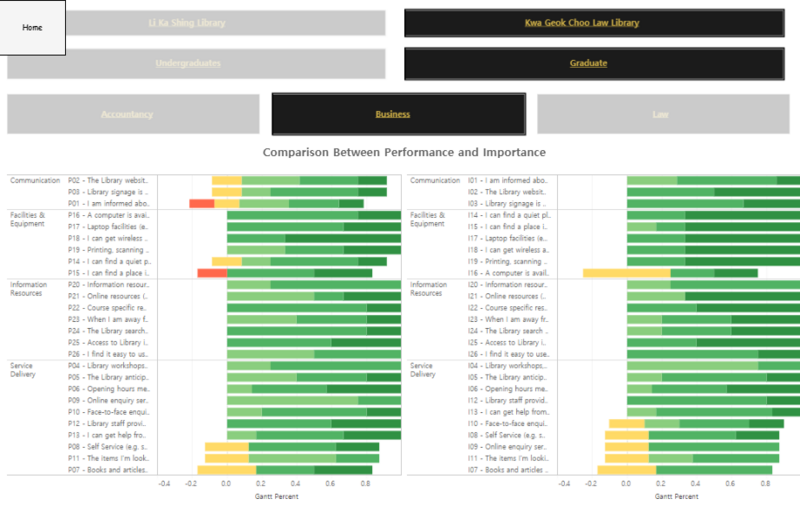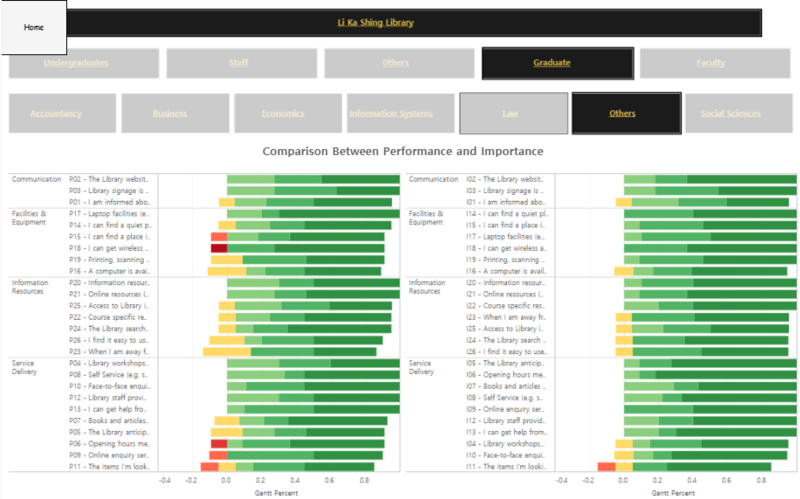From Visual Analytics for Business Intelligence
Jump to navigation
Jump to search
|
|
| Line 132: |
Line 132: |
| | '''Law''' </br> | | '''Law''' </br> |
| | 1. Similarity | | 1. Similarity |
| − | * | + | * Same as the undergraduates respondents, they face equally good wireless signals in both libraries |
| | + | * Both libraries are providing sufficient materials and resources in the library for law graduates |
| | + | * Both libraries do not provide sufficient course specific resources online for Law Graduates |
| | 2. Differences | | 2. Differences |
| − | * | + | * The stark contrast in both libaries is that the library hours in LKS meet the graduate requirements as opposed to KGC library. |
| | + | * Another important point is that computers are not available in KGC to use as opposed to lks |
| | + | * The library laptop facilities are better at LKS as opposed to KGC |
| | |- | | |- |
| | | | | | |
Revision as of 21:56, 15 March 2020
Overview
Every two years, SMU Libraries conduct a comprehensive survey in which faculty, students and staff have the opportunity to rate various aspects of SMU library's services. The survey provides SMU libraries with input to help enhance existing services and to anticipate emerging needs of SMU faculty, students and staff. The latest survey is currently on going and will be ended by 17th February 2020.
The past reports are mainly made-up of pages of tables, which are very difficult to comprehend. In view of this, your task is to apply appropriate data visualisation to transform these tables into visual representation that allow SMU libraries to gain useful insights.
Data Cleaning & Preparation
About
An overview of the library 2018 survey results found that there are 2638 respondents in total that responded to various parts of the 83 survey questions with respect to the performance and importance level of the library and other general questions to understand the patron's sentiments of the SMU Library. Here is the breakdown of the users that frequent the SMU library
Figure 1
As seen from figure 1, predominantly, most of the survey respondents comes from undergraduates with some from other areas such as graduates, faculty, staff and others. In order to gain more insights from the survey results, we will first do some pre-processing and cleaning of the data.
Cleaning
| Step
|
Screen shot
|
Explanation
|
| 1
|
Img 1
Img 2
|
- Based on the initial dataset given, the datset is aggregated by values for various fields as seen from img 1. The column names are labelled by its code number and there is no name given in the raw data. The given names are represented in img 2 where the labelling of each code are given in the legend.
- To re-label the data into a readable dataset for users to further analyse, we will then process the data and labelling through excel.
|
| 2
|
Img 3
|
- Through using lookup and concatenate function, we can combine the id code and the name into the column headers. We then transfer the values into a new sheet and re-arrange the values such that the general questions are in front as seen in Img 3.
|
| 3
|
|
- After further inspection of the survey questions, there is 26 survey questions that are irrelevant towards the insights that will be generated later on. The survey questions that fall under the ID code 'NA' to filtered and removed under the 'Datasource' tab.
|
Findings
From the word cloud generated by RStudio, the common words that appear consistently are book, area, hour, find, make and many more.
| No.
|
Finding
|
Description
|
|
1.
|
|
- Looking at the overall findings for Performance and Importance, generally most metrics perform nearly up to the level of what the Graduates expect of the library.
- One big difference is the variance in the Facilities & Equipment which is similar to undergraduates where the performance level of these group of services fall short of the expectations.
- However, the negative ratings in these group generally comes from the performance of the library services.
|
|
2.
|
|
Accountancy
1. Similarity
- There is good wireless access in both libraries as seen by the positive green areas from both libraries by the graduate respondents.
- The libraries are lacking in providing ample quiet places in the library to the graduate users in both library
- The Library workshops are providing sufficient help to graduate users.
2. Differences
- The items that graduate users constantly look for are often or not missing in LKS as compared to KGC
- Opening hours of LKS do not meet the requirements of grduate users as compared to KGC
- Information resources are not as available for graduate users in LKS as compared to KGC
- Laptop facilities (power,desk) are more readily available in LKS as compared to KGC for graduate users.
|
|
3.
|
|
Law
1. Similarity
- Same as the undergraduates respondents, they face equally good wireless signals in both libraries
- Both libraries are providing sufficient materials and resources in the library for law graduates
- Both libraries do not provide sufficient course specific resources online for Law Graduates
2. Differences
- The stark contrast in both libaries is that the library hours in LKS meet the graduate requirements as opposed to KGC library.
- Another important point is that computers are not available in KGC to use as opposed to lks
- The library laptop facilities are better at LKS as opposed to KGC
|
|
4.
|
|
Business
1. Similarity
2. Differences
|
|
5.
|
|
Others
1. Similarity
2. Differences
|
Revealed Insights
Report
